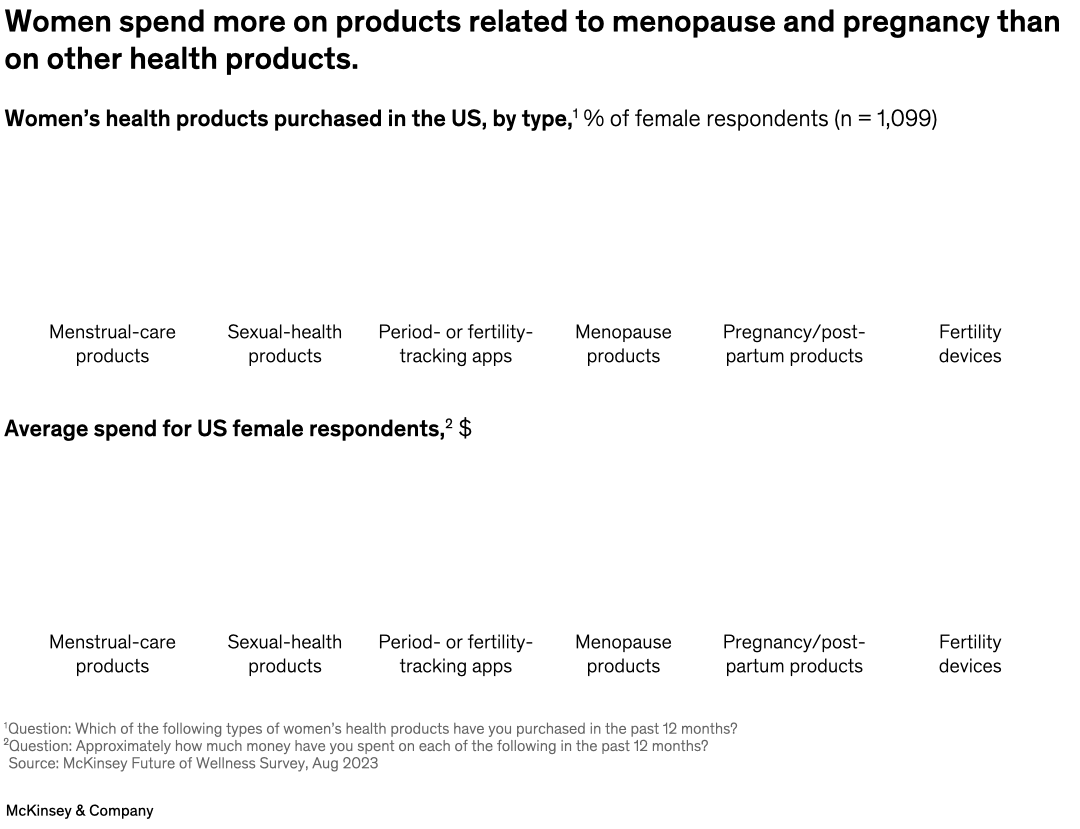There are several growth opportunities across the wellness market—including women’s health products, find senior partner Warren Teichner and coauthors. According to McKinsey’s latest Future of Wellness research, consumers say they typically spend the most on menopause and pregnancy-related products. Digital tools—such as wearable devices that can track a user’s peak fertility windows—are becoming more prevalent in the women’s health space, too.

Image description:
Two sets of 6 volume circles represent the percentage share of female respondents who purchased 6 types of women’s health products in the US in the past 12 months. The first set of circles shows the types of products purchased, from greatest to least: menstrual-care products, 47%; sexual-health products, 28%; period- or fertility-tracking apps, 10%; menopause products, 8%; pregnancy/postpartum products, 6%; and fertility devices, 4%. The second set of circles shows the average US dollar spend on those same items in the previous 12 months: menstrual-care products, $83; sexual-health products, $44; period- or fertility-tracking apps, $33; menopause products, $103; pregnancy/postpartum products, $96; and fertility devices, $96.
Source: McKinsey Future of Wellness Survey, Aug 2023.
End of image description.
To read the article, see “The trends defining the $1.8 trillion global wellness market in 2024,” January 16, 2024.